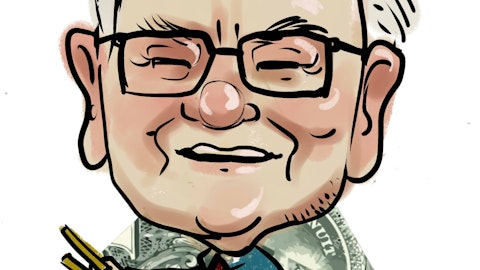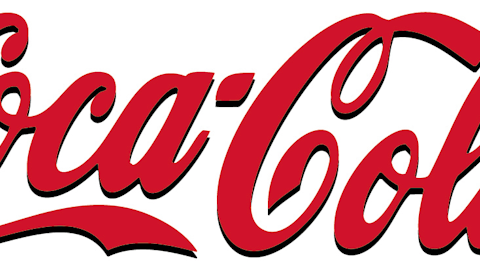What an opportunity South-East Asia is turning out to be. And I am not the only one to think so. Starbucks Corporation (NASDAQ:SBUX) Chief Howard Schultz, who is just back from his trip to South-East Asia, cannot agree more. The company just opened its 200th store in the Philippines, and announced that it will open 100 more in the country over the next four years. It will also open 100 stores in Indonesia, where it has some 143 outlets.

Starbucks Corporation (NASDAQ:SBUX)’ total presence in the region spans across 700 stores in six countries – Indonesia, Malaysia, the Philippines, Singapore, Thailand, and Vietnam. The company has come a long way since it opened its lone store in Singapore in 1996.
Starbuck’s expansion drive
Starbucks Corporation (NASDAQ:SBUX) is already the world’s largest coffee shop chain with over 18,000 stores in 62 countries. To grow even bigger, it is currently in a huge expansion spree and is planning to open stores all across the globe. It will open 1,500 stores in the US through the next five years. In China it will add another 1,500 stores by 2015, and now has plans for South-East Asia. It has appointed former Walt Disney executive Matthew Ryan as its new Global Strategy Officer to carry out these aggressive plans.
The lure of South-East Asia
The attraction of South-East Asia lies in its growing middle class population, pegged at around 600 million, and their growing disposable incomes. With this is the increasing popularity of Western brands. To capitalize on this opportunity, South-East Asia is slowly becoming a preferred destination for many companies from the West.
The Philippines’ recent growth rates have been ahead of expectations. In fact its 2012 GDP growth rate of 6.6% surpassed even the government’s own expectations, which were in the 5-6% range. For 2013, expectations vary among analysts. S&P’s foresee GDP growth projection is around 5.9% while Fitch’s estimate is a more conservative 5.5%.
On the other hand, many analysts believe Indonesia carries the most potential for growth in Asia after China. According to a World Bank report, Indonesia clocked around 6.5% GDP growth in 2011 and another 6.2% in 2012. While the report does cite challenges for future growth rates, especially from slowing down of domestic investment, 2013 GDP growth is still pegged at 6.2%.
To watch out for new Indonesian regulations
While foreign investments are always welcome, the Indonesian government is a little concerned that bigger global brands may squeeze the opportunities of local small businesses. It has recently imposed a restriction whereby any food and beverage franchise which has over 250 branches, will have to involve a local partner in any expansion beyond that limit. A similar restriction has been imposed for convenience-store chains with more than 150 stores. Existing companies who already have stores above the limit will need to adjust to the regulation within the next five years.
Starbucks will still remain within the limit even after opening its next 100 stores, but barely so (store count will grow to 243). Regulations are something that the company will have to keep in mind while planning ahead- especially because it has never operated in a sub-franchise model. However, since it will spend its next three years executing whatever is planned, it will have more time to evaluate the situation and learn from the reactions of other players, like Yum! Brands, Inc. (NYSE:YUM) for example.
Yum’s position
Yum! Brands, Inc. (NYSE:YUM) which owns KFC, Pizza Hut, and Taco Bell, is possibly the most impacted by this restriction as it has around 400 KFCs and a total of 700 stores in all in Indonesia. The company was amongst the earliest entrants in the Indonesian market, and is still expanding:It estimated that compared to 50-60 Yum outlets per million people in the US, it has still only 2-3 per million in Indonesia.
While Yum maintains that it will not alter its growth plans, it accepts that, with the involvement of smaller local partners, it will need to step up its supervision levels. Over the months, Yum! Brands, Inc. (NYSE:YUM) would be a good case study to understand what Indonesia has to offer to the big chains from the other end of the world.
Another giant heading towards Indonesia
King of beverages, The Coca-Cola Company (NYSE:KO) has also announced that it will invest around $700 million in Indonesia over the next three years. This is in line with the company’s plans to increase penetration in markets where per-capita consumption of Coca Cola brands is less than 150 eight-ounce servings annually.
The company has said that it has already spent $450 million in the past five years, of which $300 million was invested in the last couple of years alone. Popular Coca Cola brands in Indonesia include Coca Cola, Fanta, Sprite, Freshtea, and Minute Maid.
Coca Cola is experiencing robust sales in neighboring countries like India and Thailand. In 2012, the company generated 16% and 22% volume growth in the two respective markets.
Last word
Starbucks Corporation (NASDAQ:SBUX) very rightly sees enormous potential in the untapped markets of South-East Asia. With its expansion plans taking shape it should be a beneficiary of the tremendous growth that will take place in this region. The company is doing well to plan simultaneous expansion both in the matured US markets as well other emerging markets as across the globe.
Eshna De has no position in any stocks mentioned. The Motley Fool recommends Coca-Cola and Starbucks. The Motley Fool owns shares of Starbucks.


